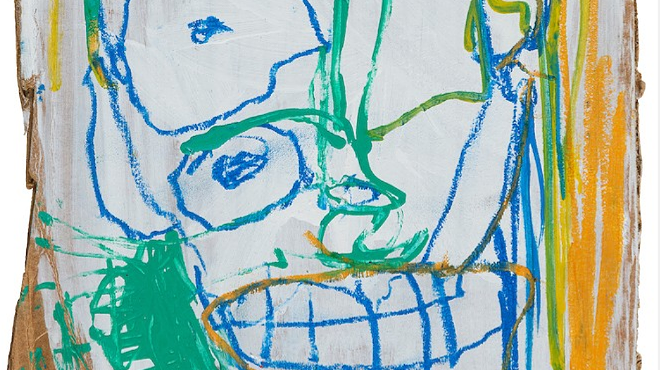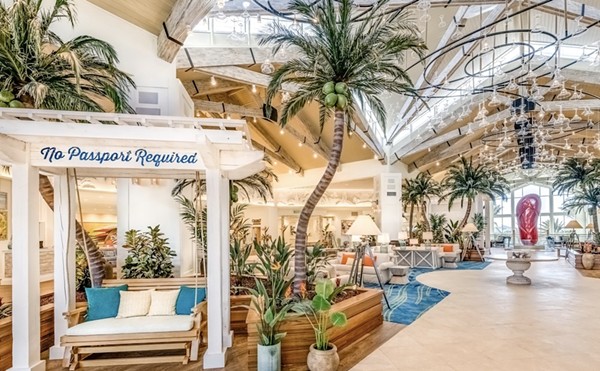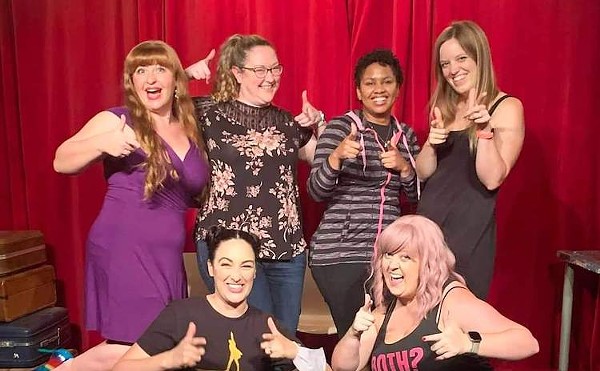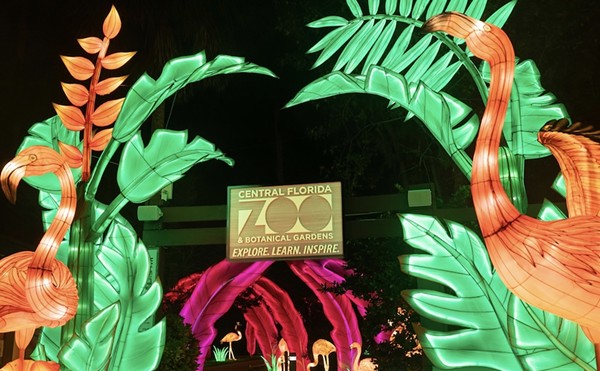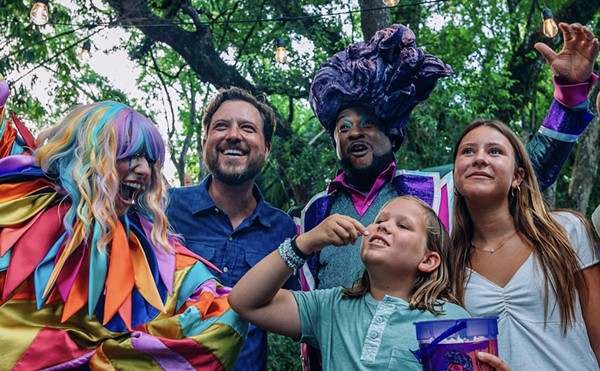What do beginner's luck, a meeting of star-crossed trailblazers and the dawn of the hip-hop age all have in common? The answer is in the story behind Heroes & Monsters, an exhibition of hitherto unshown works by painter Jean-Michel Basquiat that recently debuted at the Orlando Museum of Art on Feb. 11 to much curiosity and fanfare — and with good reason.
He's one of the few Black artists to gain a measure of real recognition during his lifetime, but the success Jean-Michel Basquiat has achieved posthumously far outstripped what he did during his short life — which was phenomenal by any account, enough to be immortalized on film in Julian Schnabel's 1996 biopic Basquiat.
In the years since Basquiat's untimely death in 1988 at the age of 27, his work has set auction prices that are unprecedented in art history. His oeuvre has become a cottage industry of mugs, calendars, T-shirts, socks, even an action figure. Even putting all of the money and hype and Basquiat's outsize legacy aside, it's the how and why this unseen collection came to the walls of OMA that's absolutely fascinating, adding another layer to Basquiat's already compelling story.
The works in Heroes & Monsters date back to 1982, considered widely to be Basquiat's breakthrough year. To put it in historical context, this is the period that found the young artist going from early struggle to quick success in his youth, moving up the rungs of the burgeoning No-Wave/Downtown scene of the New York art and music world — hanging with Andy Warhol and Debbie Harry, playing avant-skronk in a band with Vincent Gallo. It was in this milieu that his genius blossomed, yielding the work that made him a legend.
The artist found himself in Los Angeles in the spring of 1982, preparing for a show at the highly influential Gagosian Gallery, accompanied by three other art mavericks in the making: the artist Toxic, artist and musician Rammellzee, and (ahem) Madonna.
This is the "Hollywood Africans" phase, when the three men hung out like a new-school Rat Pack, partied and cut the creative juices loose that gave us masterworks like Hollywood Africans in Front of the Chinese Theater With Footprints of Movie Stars, Ishtar, Leonardo da Vinci's Greatest Hits and Untitled (Boxer).
This period was also the start of a new, hybrid phase of modern art that the trio of friends were knee-deep in — the neo-expressionism of street art, an explosion of creativity that saw punk, graffiti and DIY aesthetics leading the way forward to gallery walls and concert halls, TV, film, magazines, dance floors, DJ booths and fashion runways.
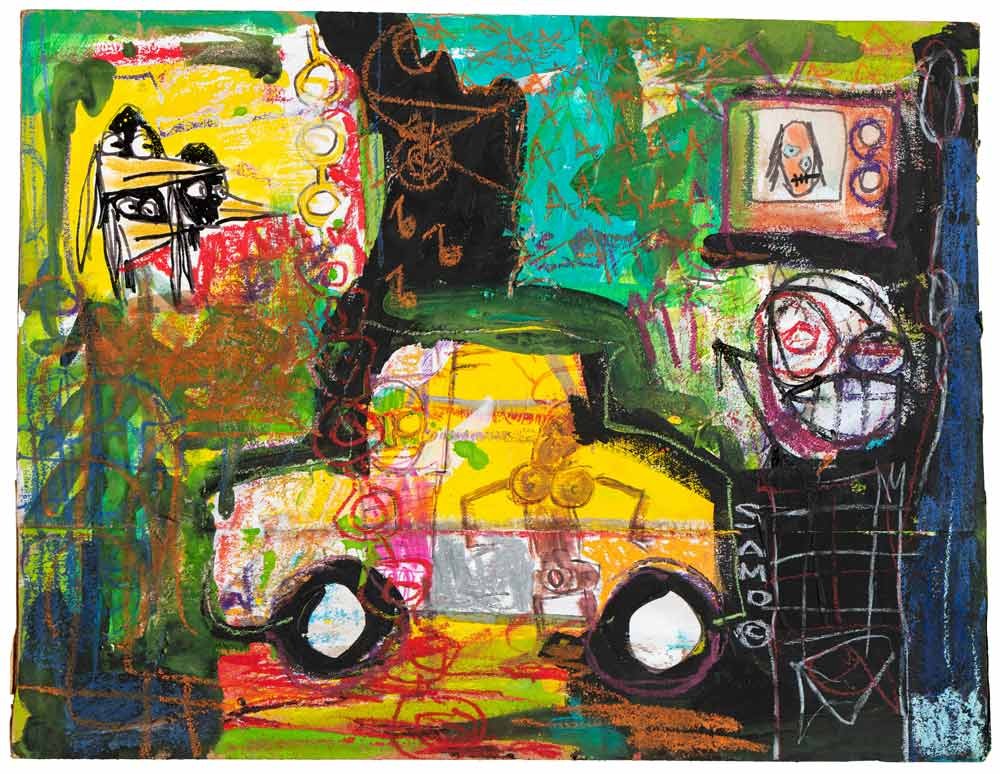
Out and about in their new West Coast environs, these three rising stars crossed paths with another maverick from an earlier generation: Thaddeus Mumford, Jr.
Mumford was a well-established, award-winning writer and producer for a plethora of hit and heady television shows — game-changers like Good Times, Roots, The Electric Company, Sesame Street, The Tonight Show, M*A*S*H. By chance Mumford found out about Basquiat's upcoming solo show at the Gagosian, and when the two met they bonded over being fellow Brooklynites and the potential Mumford saw in the young Basquiat, 10 years his junior.
Basquiat and Mumford were in creative fields at different stages of their careers — one established, the other in the early stages of cementing his celebrity. Both were Black men breaking ground in their respective industries.
Mumford ended up purchasing the 25 Basquiat originals that make up Heroes & Monsters for $5,000. That sum was peanuts considering the current, exponentially higher estimated worth of anything Basquiat touched. At the time, though, Basquiat needed the money badly and Mumford wanted to help out a young artist he felt a kinship with.
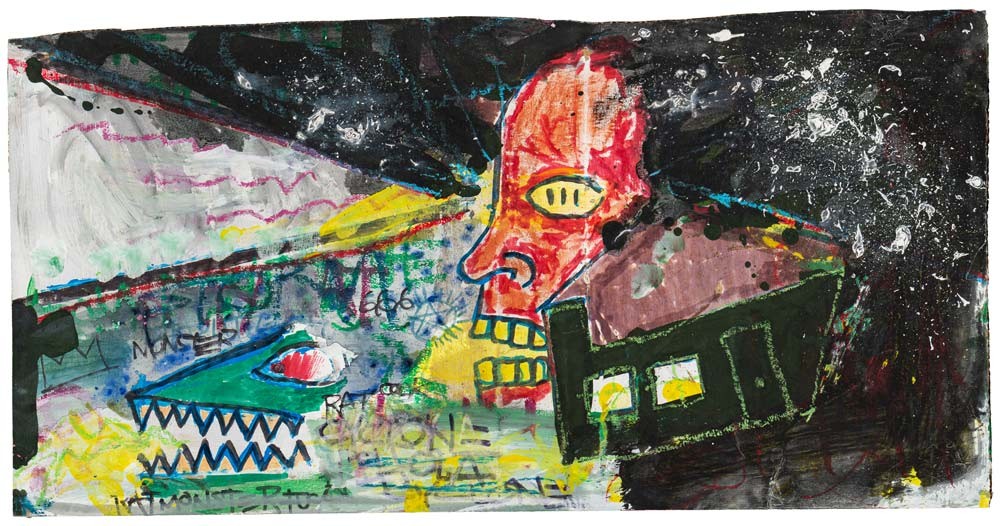
For his part, Mumford wasn't an art buyer or even a visual art enthusiast, before or after this purchase. It's said he appreciated the works but didn't fully understand them. This is the art world's equivalent of going to Vegas having never played poker and being dealt a royal flush — beginner's luck writ large.
The works were put in storage, where they sat for decades before being "discovered" and sold shortly before Mumford's death in 2018. Mumford would never realize the full value of the pieces he purchased on that fateful day, and they remained in storage, untouched and unseen until now.
What makes this particular story so unique — even in Basquiat's singular life — is the confluence, the chance crossing of these disparate forces at a pivotal moment in time. This was the dawning of the hip-hop age, evident in what Basquiat, Rammellzee and Toxic were creating, and with roots in Mumford's work in ahead-of-the-curve shows Good Times, The Electric Company and the iconic miniseries Roots.
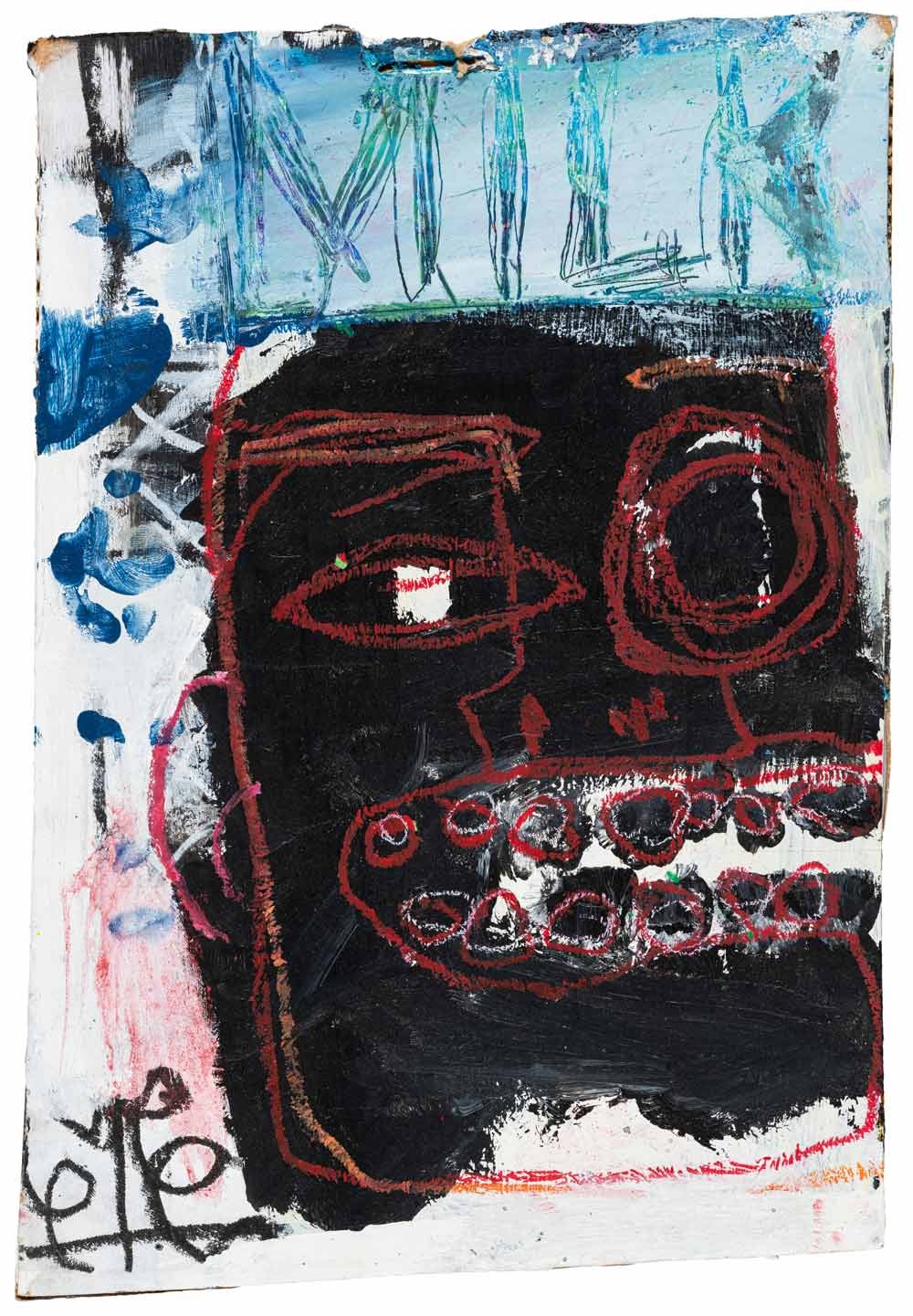
The work featured in Heroes & Monsters, to paraphrase from an essay by Rene Ricard — the go-to authority when discussing Basquiat — is radiantly childlike and childlike in its radiance. Committed to smaller surfaces of wood, paper and cardboard, these images look fresh and modern still. Layers of colors with images stacked one on top of another. His familiar boxer motif is present, of course. Screaming creatures. Exclamations repeat, are crossed out and then written over and over again. Skulls, crowns, teeth, claws, historical faces and oblique references adorn everything — with oft-shocking use of color to boot.
More like a graffiti blast than a mannered paint stroke, these works are zapped on the surface with a velocity and immediacy. Dizzying. You feel the urge and creative rush embedded in each work; sometimes it feels as if Basquiat is even in the room with you. See for yourself in Reptile With Claws or in the marquee piece, Industry Insider: reds, golds, greens, black and brown tones are all layered beautifully in a visual traffic jam. Some are signed with his name in full, some simply "Jean," others with his street tag, SAMO.
There's a poem by Basquiat incorporated into the exhibition, originally transcribed by Mumford, that in some ways encapsulates the times and trajectories of both: "We film, we write, we film, we paint. Crowning glory brings cheers and statues." And indeed, fame, fortune, notoriety and Emmys would eventually come in due time — much of that posthumous in Basquiat's case.
OMA's director, Dr. Aaron De Groft, who was instrumental in making this exhibition happen, says that Heroes & Monsters is "a trove of riches; we as a community have the hottest artist in the world debuting some critical work that's never before seen."
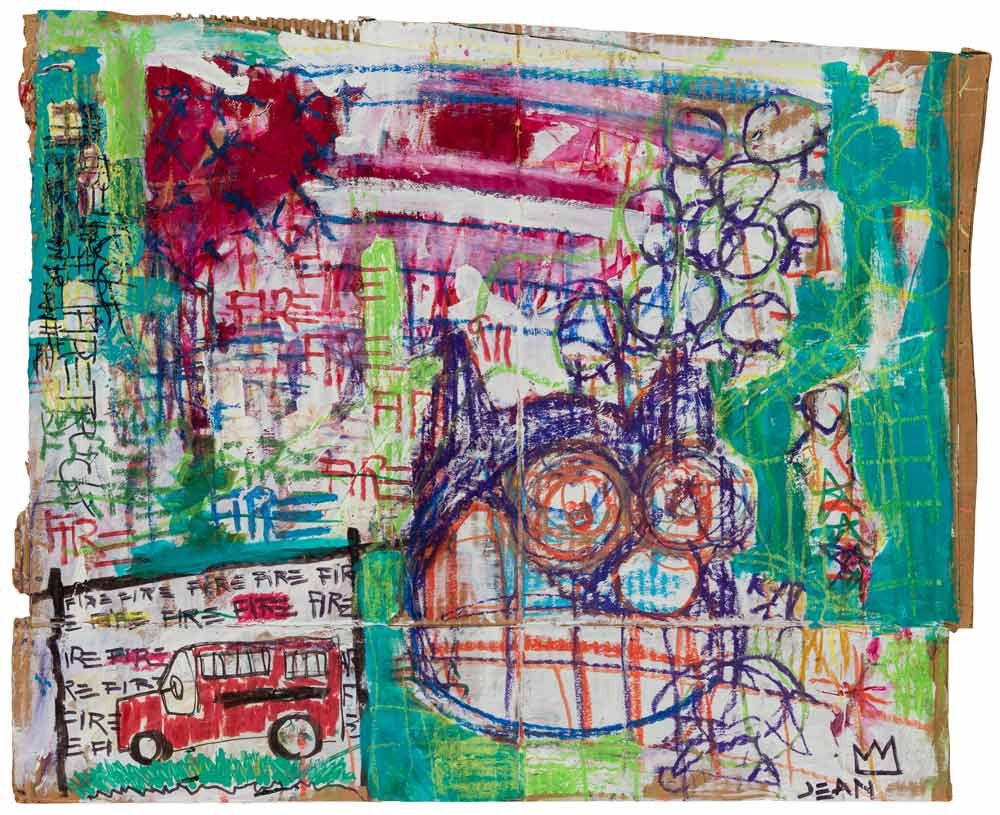
We ask De Groft what he thinks of Basquiat's legacy circa 2022 and the fascination the public still has with him as both an artist and cultural icon. "He told his father he was going to be a famous artist," De Groft says. "This is the 40th anniversary of these works and look where he stands today. He ushered in the age, whether he intended it or not, the era of the artist as a superstar. The level of success now has never happened previously in the history of art. I think his legacy is way bigger now than when he was alive. He holds the auction record. Before that it was Leonardo da Vinci under the pseudonym 'Salvator Mundi' and Jackson Pollock. The proof's there, he's among the greats."
One of the eyewitnesses — and key participants — in the exploits of the "Hollywood Africans" was Torrance Ablack, aka Toxic. Toxic was there at the time at Basquiat's side, often photographed alongside him and depicted several times in his work. Orlando Weekly reached Toxic at his current base of operations in Italy, and he was happy to revisit that period of time.
"I think half of my conversations with Jean back then popped up on the paintings like Swine Free and No Caffeine," recalls Toxic. "We were into the Five-Percent Nation stuff back then. He was open to everything. I asked if he wanted to see something and we went up to the Bronx to a Zulu Nation party and he loved all that."
Toxic continues, "I have to give props to the older folks like Ornette Coleman who gave the time and good word. Our objective was not to be famous, but to change history. We weren't going to be pigeonholed ... and we did that with the music, the art. Look at it today and I think we did it, we succeeded."
Toxic paints a vivid picture of this period in Los Angeles. "When we were recording 'Beat Bop' [the influential and oft-sampled 12-inch single produced by Basquiat featuring Rammellzee], we finished in the studio and Larry [Gagosian] sent a Cadillac over and we went to the airport and off to L.A. and never came back, so to speak ... not the same, at least.
"We got there wearing NYC winter-wear and it was the West Coast and Jean got Larry to take him shopping on Rodeo Drive. I was 16 and I couldn't drink so I spent a lot of time in the bathroom getting drinks smuggled in. Going to the beach, going to places we only heard of until then ... Venice Beach, let's go! Hanging out in the bathroom with Robert DeNiro. Jack Nicholson coming over to our table and laughing it up with us. The press made it sound like we were these invading artists, partying and everything. We were having fun, as innocent as it could be at that time.
"One thing that was eye-opening was seeing the lack of Black people depicted in this land of Hollywood. At Grauman's Chinese Theater with all the handprints in the sidewalk out in front of it, there were no Black people represented. It left an impression, and we became the Hollywood Africans."
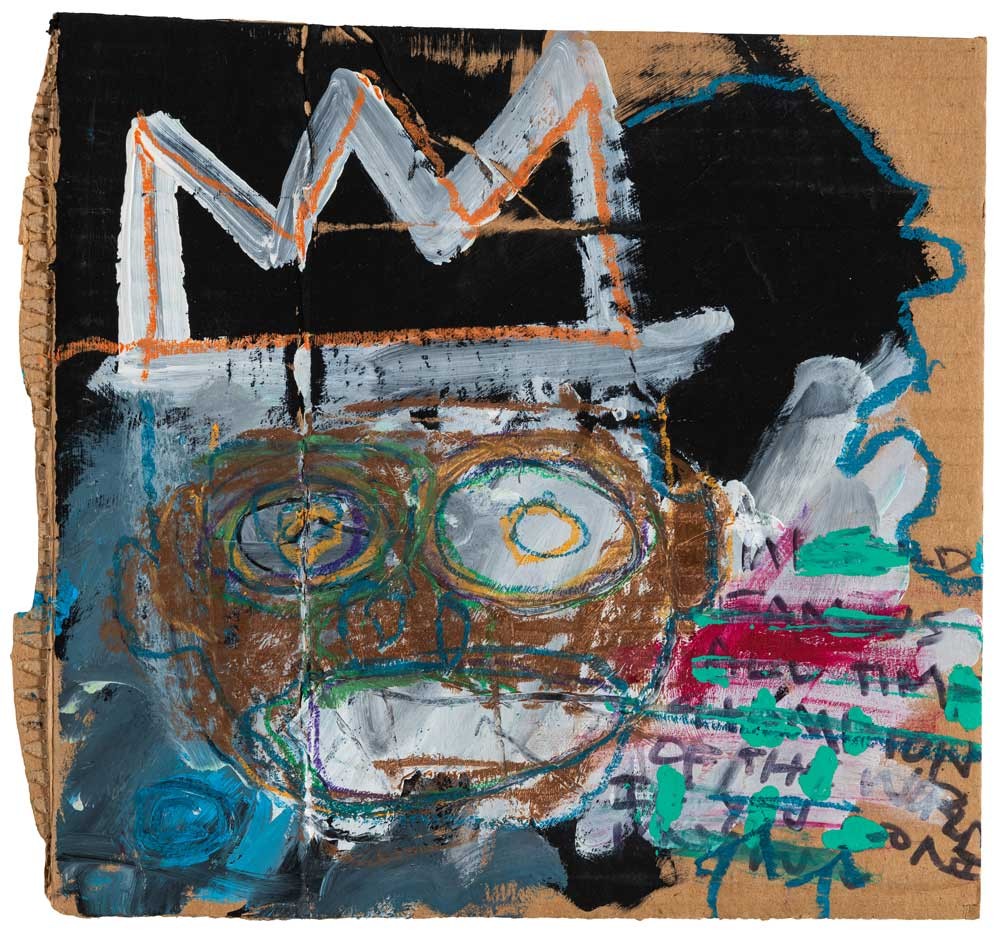
When asked about the mythology of Basquiat burning very brightly for a short period of time and leaving behind influential work, much like jazz musician Clifford Brown, poet Arthur Rimbaud, comedian Freddie Prinze or fellow artist Bob Thompson, Toxic reflects for a moment.
"Well, it took his passing for people to really realize Jean's genius, and with that came recognition for a lot of us: myself, Rammellzee, A-One, Dondi, Fab 5. When you shine bright, you shine really bright. If I had to think about Jean's legacy, I think about him and Ramm — myself included — when they were here and now that they aren't. ... They succeeded in changing history. We did what we wanted to do. We changed history. Now there are so many more Black artists being accepted in galleries, there are Black curators ... the music has really taken off were you can be young, Black and gay and sell a million records. The whole thing was to be included and not continuously excluded from culture. We really looked to clues from the past to see the future. Jean's legacy is going to live on as a result."
Once upon a time in L.A., these young artists were changing history and popular culture. You can see some lost artifacts of that creative revolution today in the physical form — with all the attendant spirit — right here in Orlando. "We can be heroes," as the old song says.
Heroes & Monsters: Jean-Michel Basquiat, the Thaddeus Mumford, Jr. Venice Collection. Through June 30, 2023, at Orlando Museum of Art, 2416 N. Mills Ave.; $20


